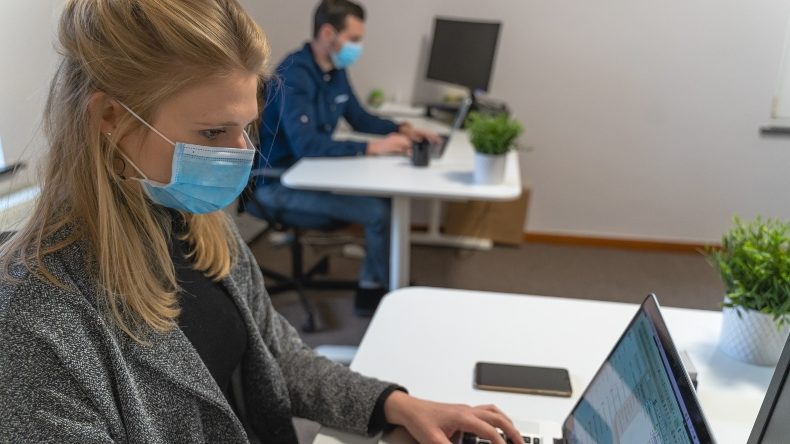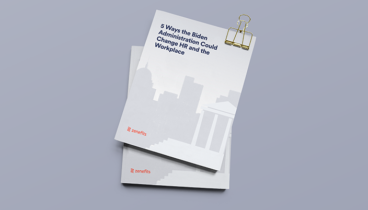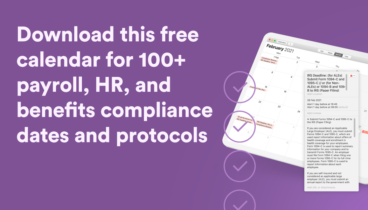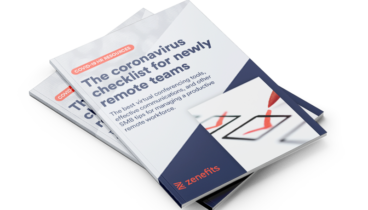If you’re looking to combine both remote and in-person work at your company, a hybrid workplace may be the best solution.

As we stretch past the one-year mark since the coronavirus pandemic has upended life around the world as we know it, everyone from workers to small businesses owners have seen their workplaces change dramatically over the last 365 days.
While the future isn’t certain and it’s still too early to tell what all of this is going to mean in the long run, one thing has stood out as relatively steady: Working remotely is here to stay, at least in the short term.
As vaccinations increase and we begin to think about returning to the workplace, hybrid models are becoming popular solutions among businesses big and small.
Never heard of hybrid workplaces? Maybe you’ve heard the term here or there but don’t really know exactly what it means or how it’s supposed to work in practice. Here’s a crash course in the 2021 hybrid workplace with tips and tricks for structuring your own.
First, what exactly is a hybrid workplace?
A hybrid workplace is one that combines both remote and in-person work. If your small business went completely remote during much of the pandemic but is thinking about ways to come back to in-person work in some way, shape, or form while still keeping some aspects of work remote, you’re already considering a hybrid workplace!
It’s important to note that hybrid work isn’t necessarily in-office work. It certainly can be, but even getting a coworking space, reserving meet rooms once a month, or having team meetings at a local coffee shop that everyone likes constitutes a hybrid work model, too.
While hybrid work models have certainly been on the rise because of the pandemic, they’re actually not new. Small businesses and tech startups that don’t quite have the funds for a complete office space or even large corporations that allow their workers to work from home when they please are operating under some form of a hybrid work environment.
The flexibility of a hybrid workplace can go a long way even outside of the hurdles the pandemic has brought.
The idea behind them is that they increase freedom and flexibility regarding where and when to work. Especially for employees who have significant responsibilities at home, from managing kids who are still learning remotely to caring for a sick partner, the flexibility of a hybrid workplace can go a long way even outside of the hurdles the pandemic has brought.
What do I need to consider before going hybrid?
One thing to consider is your workforce. Do they want to go hybrid or do they by and large prefer traditional in-office work? Many employees, especially those in younger generations like Millennials and Gen Z, tend to like the flexibility of working from home or wherever they please, but that certainly isn’t the case for everyone.
Next, do you have the software and other necessary tools to support remote work? Many businesses have this covered thanks to the pandemic and its lockdowns, but in the event that your business wasn’t impacted in the same way, ensuring that your workers have the tools that they need to work remotely will be key.
How should I structure my hybrid workplace?
Perhaps the most important and effective thing you can do when figuring out what your hybrid workplace will be like is including your employees in the process.
It’s easy for you as the owner or upper management to see things from your perspective, but the best way to make sure you’re designing an arrangement that will actually work for you employees is for them to provide direct feedback. You can do that in team meetings on the topic or you could consider something like an anonymous survey that can help those more afraid to speak up to share their thoughts.
When it comes to going back into a physical workspace, it’s essential that it’s safe and sanitary since COVID-19 is far from being in the rearview mirror yet. You’ll want to stay on top of local and national safety guidance as policies and procedures change over time and ensure that your workplace adapts accordingly across everything from sanitation to social distancing.
When it comes to going back into a physical workspace, it’s essential that it’s safe and sanitary since COVID-19 is far from being in the rearview mirror yet.
Other considerations
The other consideration you’ll have to weigh and ultimately solve for are those who aren’t able to return to the workplace yet, for whatever reason. Ensuring that employees who return to in person work aren’t inadvertently getting perks like more time with management or being perceived as more committed or productive than those who are still working completely or largely from home.
Other areas to think about are things like:
- How employees will sign up to use and ultimately share limited in-person workspace
- How communication will flow between in-person and remote workers
- What safety compliance measures (think: reporting close contact with someone who has tested positive for COVID) will be required
Then, once you have your plan, it’s all about communicating it as clearly as possible and sufficiently answering any and all questions and concerns that your employees might have. Consider rolling your plan out on a trial basis for, say, 3 months or so with a commitment to revisit the plan and edit it as necessary when that time is up. This way you’ve built in a process to iron out any unforeseen challenges that will be nearly impossible to anticipate until the plan is actually underway.
Check out our People Ops Podcast episode “Setting up Managers for Success in a Remote-Friendly Future.”







